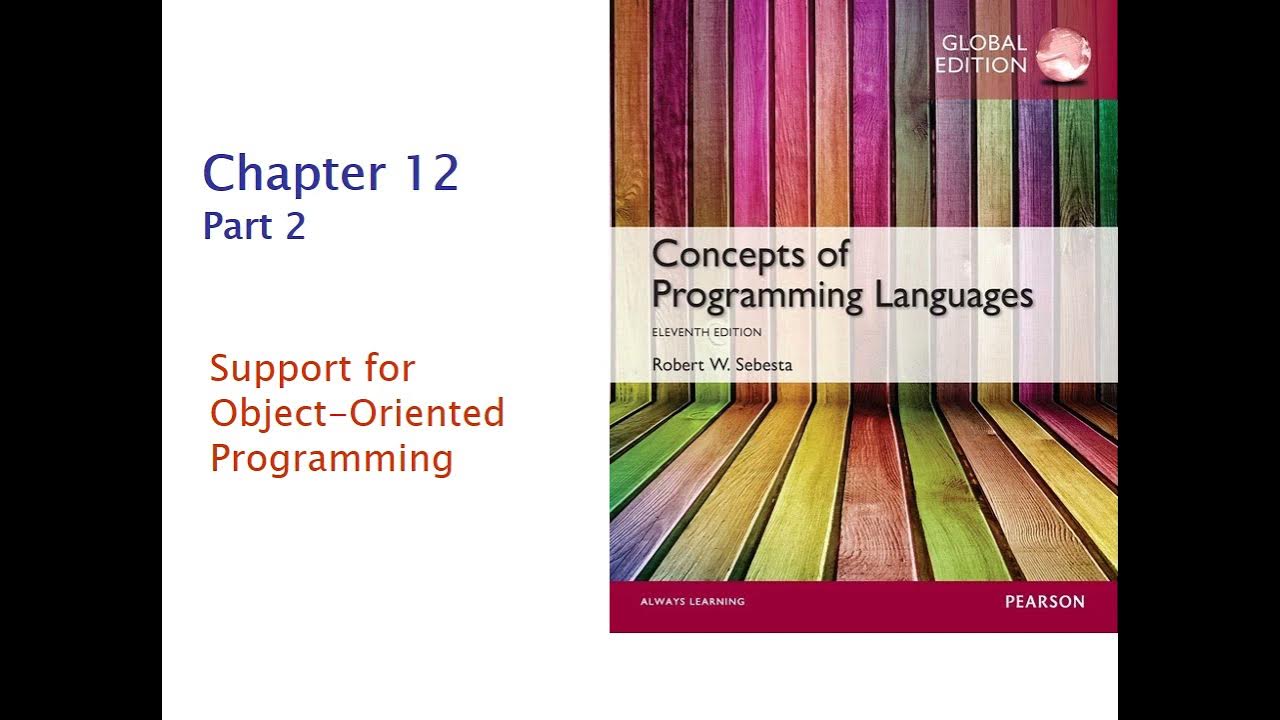Object Oriented Programming Dasar pada C++ (Class, Object, Method, dan Constructor)
Summary
TLDRThis video introduces Object-Oriented Programming (OOP) concepts in C++ through a practical, hands-on approach. The tutorial begins with an explanation of classes and objects, illustrating their relationship using the analogy of a cake mold and the cake itself. Key concepts such as attributes, methods, and constructors are explained, highlighting their roles in defining and manipulating objects. Additionally, the video covers how to implement attributes and methods both within and outside the class, along with the use of constructors to initialize object data. The session concludes with practical demonstrations, reinforcing the OOP principles for clearer understanding and application.
Takeaways
- 😀 Object-Oriented Programming (OOP) in C++ emphasizes creating objects containing data members and functions.
- 😀 Classes act as blueprints for creating objects, much like how a mold is used to shape a cake.
- 😀 A single class can generate multiple objects, and each object can have its own unique data.
- 😀 Access modifiers (public, private, protected) control the visibility of class members, determining which parts of the class are accessible from outside the class.
- 😀 Public members of a class can be accessed from outside, private members cannot, and protected members can be accessed only by derived classes.
- 😀 Attributes (like name, NIM, age, IPK) define the properties or characteristics of an object.
- 😀 Methods are functions or actions that belong to a class and define what an object of the class can do.
- 😀 The constructor method initializes objects with default or initial values when they are created.
- 😀 Objects are instantiated from a class, meaning that they are created based on the class's structure and contain specific data.
- 😀 Constructors help set initial values for attributes and avoid memory wastage by reducing redundant initialization processes.
- 😀 There are two main ways to define methods in a class: inside the class (inline) or outside the class using a scope resolution operator (::).
Q & A
What is Object-Oriented Programming (OOP)?
-Object-Oriented Programming (OOP) is a programming paradigm that focuses on creating objects, which are instances of classes, containing data members and member functions. Unlike procedural programming, which focuses on functions and procedures, OOP organizes code into objects and classes.
What are the key components of OOP as described in the script?
-The key components of OOP mentioned in the script are classes, objects, methods, and constructors. Classes are templates for creating objects, methods are functions defined inside classes, and constructors are special methods used to initialize objects.
How is a class defined in C++ according to the script?
-In C++, a class is defined using the 'class' keyword followed by the class name and a body enclosed in curly braces. The body contains attributes, methods, and a constructor. Access modifiers such as 'public', 'private', and 'protected' control the visibility of class members.
What is the role of the constructor in a class?
-A constructor in a class is a special method that is called when an object of the class is created. Its main purpose is to initialize the object's attributes to default or specified values.
What is the difference between public, private, and protected access modifiers?
-The 'public' modifier allows members of the class to be accessed from outside the class, 'private' restricts access to within the class, and 'protected' allows access within the class and by derived classes, but not from outside.
What is the analogy used to explain the relationship between a class and an object?
-The analogy used is that a class is like a mold (or blueprint), and an object is like the finished product (such as a cake) created from that mold. A class can be used to create multiple objects.
How do you create an object from a class in C++?
-To create an object in C++, you instantiate the class by writing the class name followed by the object's name. For example, 'Mahasiswa mahasiswa1;' creates an object named 'mahasiswa1' from the 'Mahasiswa' class.
What are attributes in a class?
-Attributes in a class are characteristics or properties of an object. They define the state of an object and can be different for each instance of the class, such as 'name', 'NIM', and 'IPK' for a student class.
What are methods, and how do they differ from attributes?
-Methods are functions that define the behaviors or actions that can be performed on or by an object. Unlike attributes, which store data, methods perform operations such as 'study', 'walk', or 'speak'.
What is the difference between defining a method inside a class versus outside of it?
-Defining a method inside a class places the method's body within the class declaration. Defining a method outside of the class requires first declaring the method inside the class, followed by defining the method's body outside the class.
Outlines

This section is available to paid users only. Please upgrade to access this part.
Upgrade NowMindmap

This section is available to paid users only. Please upgrade to access this part.
Upgrade NowKeywords

This section is available to paid users only. Please upgrade to access this part.
Upgrade NowHighlights

This section is available to paid users only. Please upgrade to access this part.
Upgrade NowTranscripts

This section is available to paid users only. Please upgrade to access this part.
Upgrade NowBrowse More Related Video

COS 333: Chapter 12, Part 2

Overview of Object-oriented programming in C# | C# object-oriented programming | C# oops

Object Oriented Programming Part 1 | C ++ Tutorial | Mr. Kishore

Introduction To Classes And Objects | C++ Tutorial

Lec 2: What is Object Oriented Programming (OOP) | POP vs OOP | C++ Tutorials for Beginners

KONSEP DASAR PEMROGRAMAN BERORIENTASI OBJEK
5.0 / 5 (0 votes)